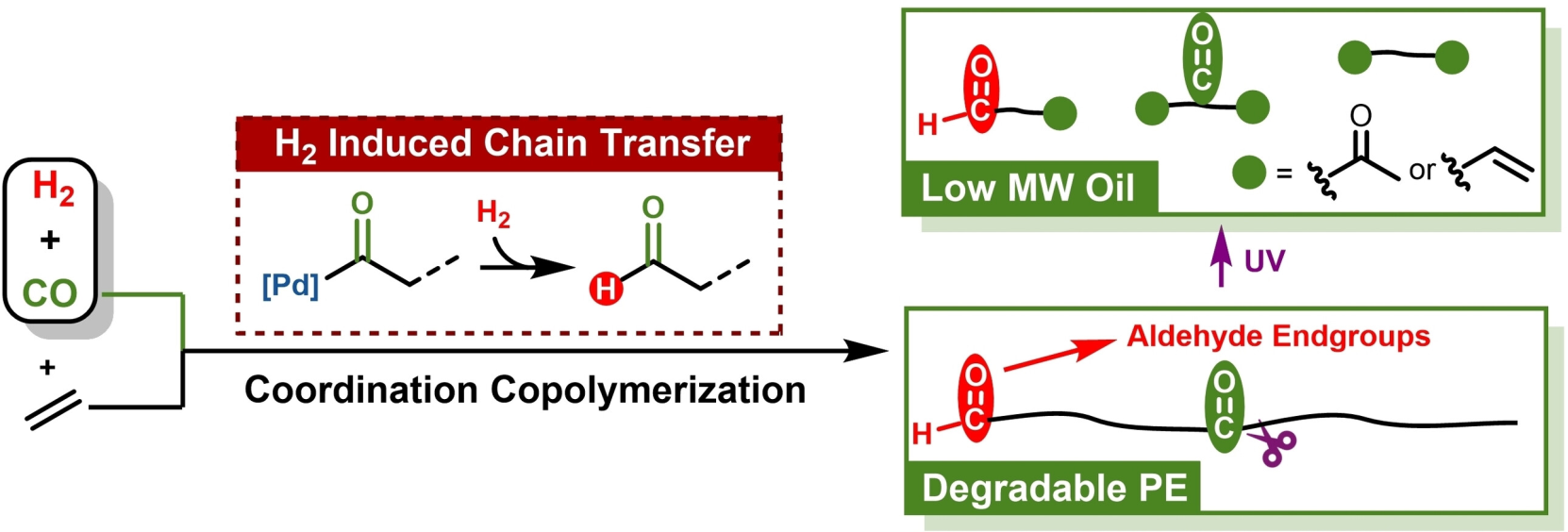Polyolefin materials, exemplified by polyethylene (PE), are among the most widely produced synthetic plastics globally. Following the pioneering work of Ziegler and Natta, transition metal-catalyzed olefin (co−)polymerization in the presence of hydrogen (H2 response: tuning molecular weight) has become the dominant method for industrial polyolefin production. Over recent years, how to endow polyolefin degradability has become a challenge. To access degradable polyolefin plastic, non-alternating copolymerization of ethylene (E) and carbon monoxide (CO) for producing polyethylene (PE) with in-chain ketones is particularly appealing; however, it still presents significant challenges such as molecular weight modulation and chain end-group control.
Recently, Zhongbao Jian's research team of Changchun Institute of Applied Chemistry published an article in Angewandte Chemie International Edition. In this study, they achieved hydrogen-controlled E/CO non-alternating copolymerization using late transition metal catalysts. This process results in linear PEs containing the desired non-alternating in-chain keto groups (1.0–9.3 mol %) and with tunable molecular weights ranging from 43 to 195 kDa. In this reaction, H2 serves as a chain transfer agent, modulating the polymer's molecular weight, forming unique aldehyde end-groups and eliminating usual olefinic end-groups; CO undergoes non-alternating insertion into the PE chain, resulting in a strictly non-alternating structure (>99 %) for the keto-PE. This affords a one-step method for synthesizing end-functionalized polyethylene-like materials from simple and readily available feedstocks. The spread-out incorporation of in-chain isolated keto groups retains desirable properties of bulk polyethylene and facilitates the photodegradation of polyethylene to the maximum extent, whose degradation products have unambiguous end-group structures. This potentially contributes to the development of degradable plastics.
C. Song, D. Yang, C. Wang, Z. Tang, Y. Long, Y. Zhang*, Z. Jian*, Angew. Chem. Int. Ed. 2024, e202410885.

Starting from three large-scale feedstocks of ethylene (E) + carbon monoxide (CO) + hydrogen (H2), direct hydrogen-controlled non-alternating copolymerization of CO and E produces aldehyde end-capped polyethylene (PE) materials with in-chain isolated keto group, whose molecular weight and chain end-group could be modulated by H2. Such semicrystalline PE could undergo photodegradation to oily derivatives.
